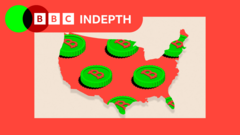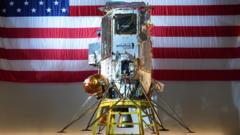As generative AI tools like ChatGPT and Copilot gain traction for creating mini-me dolls, experts warn of energy consumption and ethical issues tied to privacy and copyright.
AI Dolls: Trendy Fun or Environmental Concern?

AI Dolls: Trendy Fun or Environmental Concern?
The popular AI doll trend faces scrutiny over its environmental impact amidst growing participation.
In the digital world, the allure of pocket-sized dolls created through generative AI is gaining momentum. Social media platforms are buzzing with users showing off their transformed selves, with many adopting avatar-like figures to fit in with the latest trend. Utilizing tools such as ChatGPT and Copilot, creators are able to reimagine themselves as fun-sized action figures—essentially turning themselves into collectible memorabilia. However, behind the playful facade lies a web of serious concerns that cannot be overlooked.
The process is fairly straightforward, requiring participants to upload their pictures along with specific prompts detailing how they want their AI-generated doll to appear. From clothing choices to the actions and environment of the doll, everything is tailored according to user vision. Though creativity flourishes, the technology has its drawbacks; many users have shared humorous outcomes showcasing the tool’s occasional inability to accurately replicate desired features.
This growing phenomenon has gained traction not just among individual users, but brands, such as beauty influencers and major companies like Royal Mail, have also jumped on the bandwagon, hoping to engage consumers with this light-hearted gimmick. However, experts urge caution, as the quick boom of AI-driven content brings about unexpected challenges.
The environmental impact associated with AI doll generation is a primary concern. Professor Gina Neff noted that technologies like ChatGPT consume vast amounts of electricity—more than some countries. The playful activity might be leading to deeper ecological consequences; a sentiment echoed by TechRadar’s Lance Ulanoff who quipped, “every time we create one of these AI memes, it kills a tree.”
Furthermore, concerns regarding copyright infringement have been raised. Experts point out that AI tools often access copyrighted datasets to generate images, which raises ethical questions about the responsibilities of creators and brands. Additional worries such as privacy breaches and the blending of different cultural elements without accountability loom large over this trend.
Though the AI doll trend may seem harmlessly fun, social media analyst Jasmine Enberg believes it fuels a rapid shift in online behaviors. As digital engagement becomes more entwined with AI technologies, awareness about the potential detrimental effects must accompany the excitement.
Cognitive dissonance arises when enjoying these amusing creations clashes with awareness of their ecological impact. As we partake in this modern fad, it is vital to consider the consequences behind the glimmering screen.
The process is fairly straightforward, requiring participants to upload their pictures along with specific prompts detailing how they want their AI-generated doll to appear. From clothing choices to the actions and environment of the doll, everything is tailored according to user vision. Though creativity flourishes, the technology has its drawbacks; many users have shared humorous outcomes showcasing the tool’s occasional inability to accurately replicate desired features.
This growing phenomenon has gained traction not just among individual users, but brands, such as beauty influencers and major companies like Royal Mail, have also jumped on the bandwagon, hoping to engage consumers with this light-hearted gimmick. However, experts urge caution, as the quick boom of AI-driven content brings about unexpected challenges.
The environmental impact associated with AI doll generation is a primary concern. Professor Gina Neff noted that technologies like ChatGPT consume vast amounts of electricity—more than some countries. The playful activity might be leading to deeper ecological consequences; a sentiment echoed by TechRadar’s Lance Ulanoff who quipped, “every time we create one of these AI memes, it kills a tree.”
Furthermore, concerns regarding copyright infringement have been raised. Experts point out that AI tools often access copyrighted datasets to generate images, which raises ethical questions about the responsibilities of creators and brands. Additional worries such as privacy breaches and the blending of different cultural elements without accountability loom large over this trend.
Though the AI doll trend may seem harmlessly fun, social media analyst Jasmine Enberg believes it fuels a rapid shift in online behaviors. As digital engagement becomes more entwined with AI technologies, awareness about the potential detrimental effects must accompany the excitement.
Cognitive dissonance arises when enjoying these amusing creations clashes with awareness of their ecological impact. As we partake in this modern fad, it is vital to consider the consequences behind the glimmering screen.




















